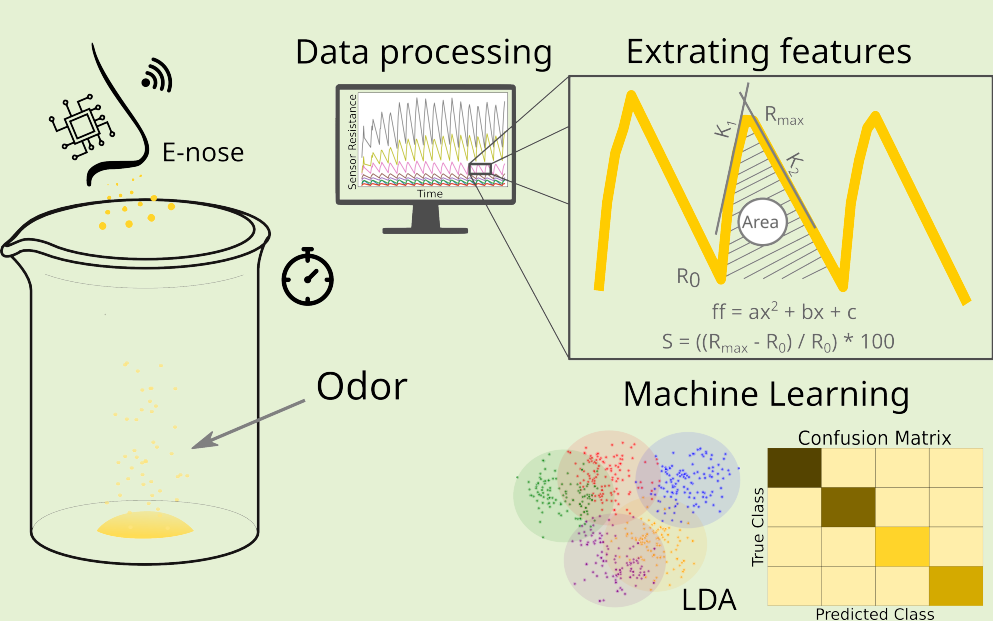This study presents a novel approach for odorant classification by integrating advanced machine learning techniques with an electronic nose (e-nose) system. The system’s performance was evaluated with four distinct volatile organic compounds (VOCs)—eucalyptol, 2-nonanone, eugenol, and 2-phenylethanol—along with odorless air as a reference. Data acquisition was performed using commercial gas sensors, and the collected VOC data were analyzed using multiple machine learning algorithms. Among these, Random Forest and CatBoost achieved the highest classification accuracy (97.1%), demonstrating superior performance in balancing precision and recall. Linear Discriminant Analysis (LDA) was employed to visualize odorant class separation in two and three dimensions, revealing distinct
clusters with some overlap between eucalyptol and eugenol. Feature importance analysis identified key predictors for classification, while the confusion matrix highlighted potential areas for improvement, particularly in distinguishing chemically similar odors. The results indicate that the proposed system is highly effective for odorant discrimination, and further optimizations could enhance its accuracy in more complex classification scenarios.

This study presents a novel approach for odorant classification by integrating advanced machine learning techniques with an electronic nose (e-nose) system. The system’s performance was evaluated with four distinct volatile organic compounds (VOCs)—eucalyptol, 2-nonanone, eugenol, and 2-phenylethanol—along with odorless air as a reference. Data acquisition was performed using commercial gas sensors, and the collected VOC data were analyzed using multiple machine learning algorithms. Among these, Random Forest and CatBoost achieved the highest classification accuracy (97.1%), demonstrating superior performance in balancing precision and recall. Linear Discriminant Analysis (LDA) was employed to visualize odorant class separation in two and three dimensions, revealing distinct
clusters with some overlap between eucalyptol and eugenol. Feature importance analysis identified key predictors for classification, while the confusion matrix highlighted potential areas for improvement, particularly in distinguishing chemically similar odors. The results indicate that the proposed system is highly effective for odorant discrimination, and further optimizations could enhance its accuracy in more complex classification scenarios.
